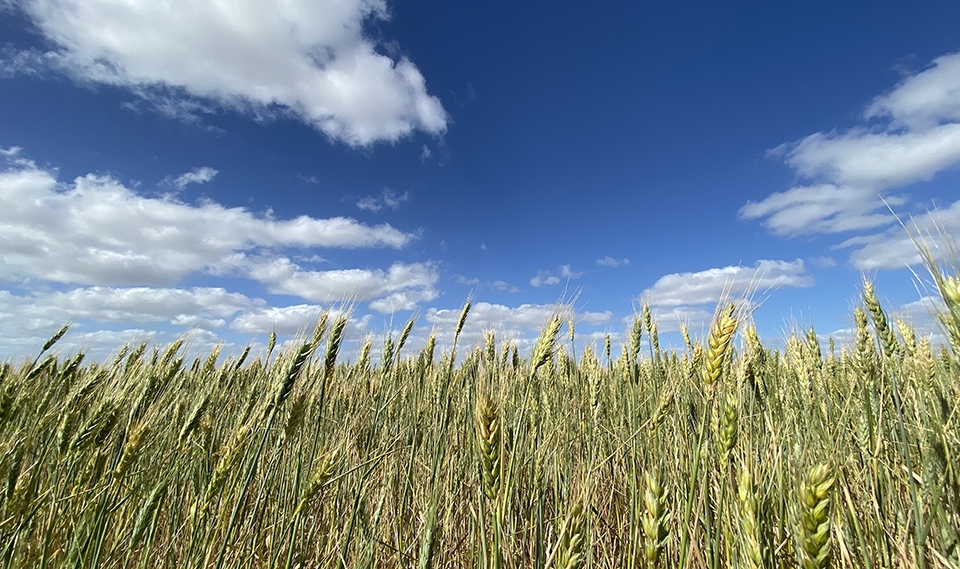A common view is that the treadmill of ever-increasing wheat yields is underpinned by declining genetic diversity in wheat plantings. Not so, in the case of USA wheat production.
Globally, agriculture is tarnished by a judgement that it is a principal cause of global biodiversity loss. Growing populations and heightened per capita wealth create a growing demand for food and feed grains. To satisfy that growing demand large swathes of biodiverse landscapes continue to be replaced by summer and winter crops.
In the case of wheat, globally 216 million hectares were planted in 2019. But not only is land clearing for crops like wheat being blamed for biodiversity loss but even the genetic diversity within wheat plantings is being questioned. The move away from historical reliance on farmers’ landraces to selection of wheat varieties via modern science-based breeding is being viewed as narrowing the genetic basis of wheat production, weakening its sustainability credentials. Is this so? Is the genetic base that underpins modern wheat varieties increasingly narrow, jeopardising the resilience of wheat production and its perceived sustainability?
To help answer that question I stumbled across a recent study that painstakingly analysed the genetic makeup of popular wheat varieties grown in the USA during the period 1919 to 2019. Chai et al. (2022) examined 1,353 uniquely named varieties.
In 1919, just 1.3% of the area planted to wheat in the USA comprised new varieties (< 5 years since release). Yet by 2019 more than a third (35.9%) of the US wheat area was planted to new varieties. Also of interest, the area weighted age of commercially grown varieties declined hugely from 36 years in 1919 to just 9 years in 2019. The decline in the area share of older varieties (>15 years since release) was similarly pronounced — 69% in 1919, but only 14% in 2019.
After closely studying the genetic makeup of all the popular USA wheat varieties, Chai et al. (2022) concluded that the genetic diversity of the USA’s three main wheat groups, winter wheat, spring wheat and durum have increased over time. Winter wheat had the highest overall diversity followed by spring wheat. In addition, and worth noting, the increase in varietal diversity over the past century was accompanied by a fourfold increase in average wheat yields.
In practice, the rapid turnover of modern crop varieties in more intensive farming systems has facilitated farmers’ responsiveness to changing market, climate, pest, weed and disease circumstances. In addition, because modern varieties are more consistently high-yielding, it now means fewer hectares need to be sown to deliver increased production. In fact, as shown in Figure 1, the USA now harvests 25% fewer hectares of wheat than it did at the turn of the 20th century; yet it produces 2.5 times more wheat!
 Figure 1: USA harvested wheat area and production from 1900/01 to 2022/23.
Figure 1: USA harvested wheat area and production from 1900/01 to 2022/23.
This intensification of wheat production, generated by modern breeding techniques, means less land needs to be allocated to produce the volumes of wheat currently being demanded. If modern breeding techniques were not available to enrich the genetic diversity and productivity of modern wheat varieties, then far more biological diversity would globally be lost as more land would have to be converted into crop production to deliver the volumes of grain being demanded by the globe’s increasing population.
In summary, modern breeding methods are delivering greater genetic diversity in wheat plantings and through yield advancement are helping limit the wider loss of biodiversity caused by clearing land to produce more grain for a growing global population.
Reference
Chai, Y., Pardey, P. and Silverstein, K. (2022) Scientific selection: A century of increasing crop varietal diversity in US wheat. PNAS Vol. 119, No. 51, e2210773119. Available at: https://doi.org/10.1073/pnas.2210773119
Expert grains industry analysis and commentary from AEGIC’s Economics and Market Insight Team on a range of big-picture topics that affect Australia’s export grains sector. Read the Horizons back catalogue.


